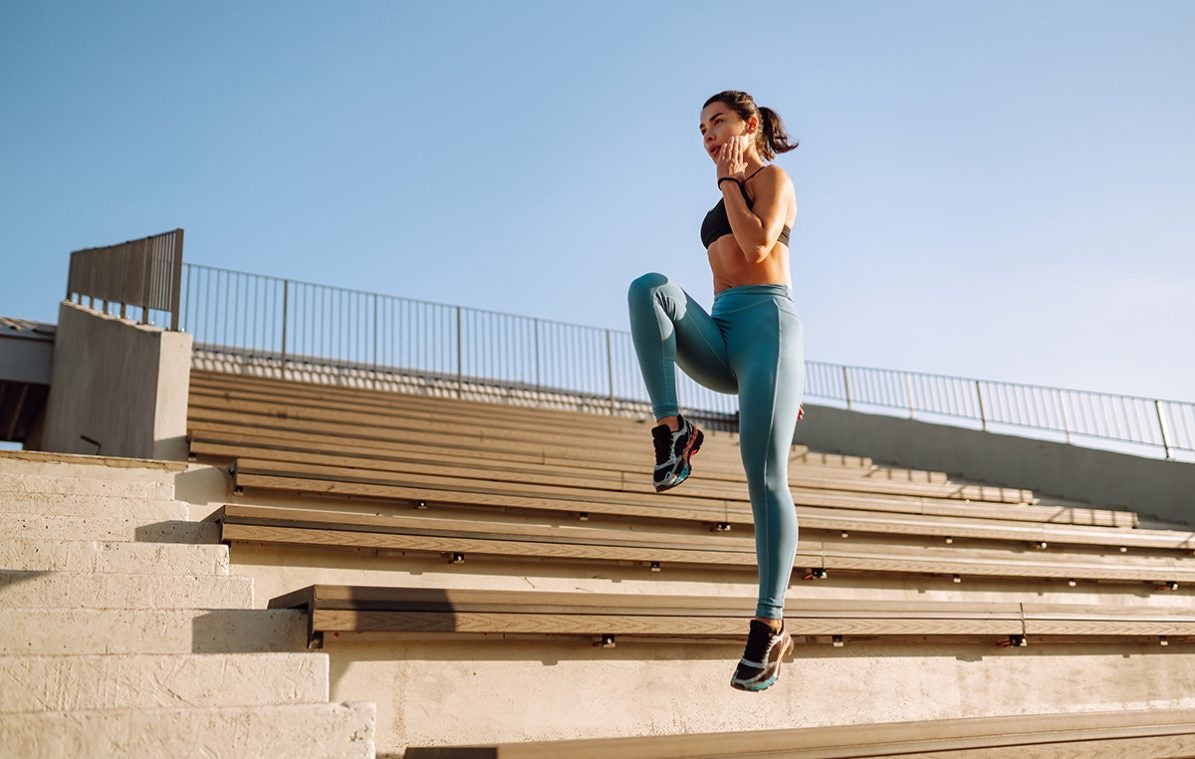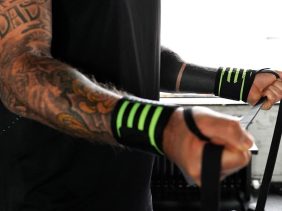7 Essential Cardio Workouts That Can Add Years to Your Life
 ©Maksym Belchenko
©Maksym Belchenko
Working out simply feels good. The endorphin rush alone is enough to make you want to pay a visit to your favorite gym or go for a run. However, endurance sports, provided you do them regularly, yield another benefit: they can lead to a longer life. This is because an endurance session trains your cardiovascular system, which has a positive long-term effect on heart health.
The topic of heart health is important to each and every one of us: Cardiovascular disease is one of the leading causes of death worldwide. But according to scientific findings, the risk of heart attacks, strokes etc. can be reduced with regular cardio exercise. You should make at least one of these 7 cardio workouts a habit, so you can reap the benefits.
#1 Jumping Rope
Jumping rope is definitely one of the most underrated cardio exercises around – and so much more than a childhood playground activity. It’s not just that you need so little equipment to get started – jumping also gets your cardiovascular system going in no time!
In a study published by the American Association for Health, Physical Education and Recreation scientists claim that jumping rope for just 10 minutes a day can have a significant effect on heart health.
And on top of that, it also boosts fat burning: according to Harvard Medical School, someone who weighs about 56 kilos is said to be able to burn 300 calories just by jumping rope for 30 minutes. The more you weigh, the more calories you burn.
If you don’t have much experience of jumping rope, it’s best to start slowly so that your feet, ankles and shins can get used to it. And don”t forget that it”s pretty strenuous. Instead of jumping for 10 minutes at a time, break your workout into intervals of 30 seconds or one minute each, with a short rest between each set.
#2 Boxing
There’s a good reason why more and more people are taking up boxing. This sport is a great total body workout that builds stable core muscles, well-toned legs and strong arms. Boxing is also one of the most efficient cardio workouts around.
Since intense phases (one round in the ring lasts three minutes) alternate with short breaks, and not just in official boxing, it counts as interval training – which in turn is especially good for the heart. A workout that alternates between stress and recovery ensures that the heart pumps blood into the muscles while being subjected to especially high resistance. As a result, the heart muscle becomes stronger and larger, which reduces the risk of cardiovascular disease. In a study at the University of Texas, patients with mild hypertension who did boxing workouts saw their figures return to normal after only 6 weeks.
If you structure your training so that it’s similar to a fight in the ring – i.e. alternating high-intensity phases and short breaks – you can not only strengthen your heart, but also quickly sweat out 500-800 kcal per hour. This is because your metabolism is going at full speed. You also increase your coordination and responsiveness through training. And of course, releasing your frustration with each punch of a punching bag is nothing to sneeze at. So let out all your pent-up stress and anger at the next training session!
#3 Cycling
Depending on how hard you pedal while cycling, biking not only pushes your cardiovascular system especially hard, it is also THE calorie killer par excellence. Furthermore, it builds strong glutes, thigh and calf muscles, and activates the entire core. Cycling can be done either outside or in an indoor cycling gym.
According to studies, cyclists have a lower risk of heart disease because they have stronger heart muscles and a lower resting pulse rate, so cycling is among the cardio workouts that can prolong your life and keep you fit into old age.
You can burn around 200 to 600 calories while cycling at a moderate pace. If you want to achieve more, you can increase the intensity as much as you like depending on your individual condition, either by incorporating inclines into your route, or by varying the pace.
#4 Swimming
Swimming can really help keep your heart feeling young, and your whole body will benefit. This is because if you burn a lot of calories (it amounts to between roughly 200 and 500 kcal per hour depending on your swimming style) and want to strengthen your cardiovascular system but also protect your joints, then getting into that cold water is the perfect choice for you.
While swimming, the heart has to pump harder than usual, but it is strengthened due to the fact that the heart volume increases as the heart rate decreases. According to a study published in The American Journal of Cardiology it lowers blood pressure and also exercises the core and respiratory muscles. It’s best to do swimming two or three times a week in order to get your cardiovascular system properly up to speed. So that should be reason enough to pack your swimwear and get started straight away, isn’t it?
#5 HIIT
High Intensity Interval Training (HIIT) alternates short but very demanding training sets with rest periods. This makes HIIT a high-intensity, full-body workout that not only burns fat – it also has a positive effect on the cardiovascular system. This can significantly improve heart health, as was demonstrated by the outcome of a meta-analysis published in the British Journal of Sports Medicine.
The difference between conventional endurance training and HIIT lies in the heart rate. In a typical cardio workout, you’re trying to get to between 50 and 70 percent of your maximum heart rate, but HIIT is about stretching it further. When you’re going all out, you can reach a maximum heart rate of up to 90 percent. It’s a lot of physical stress, but only for less than a minute. You can see the positive consequences of such a high heart rate, as the body has to move more blood and oxygen around as a result of the intensive training: processes are set in motion that have a positive influence on heart health: your blood pressure drops, and blood sugar and cholesterol levels are also brought down to a healthy level. All of these factors are important for a long, healthy life.
#6 Jogging
When you’re jogging, your heartbeat and breathing rate increase, and your lungs transport more oxygen to the heart. This increases your heart’s volume and lowers your resting heart rate. All of these aspects are associated with longstanding heart health.
A study published in the Journal of the American College of Cardiology provides the evidence in black and white. According to the scientists, regular running sessions are associated with a 45% reduced risk of dying from cardiovascular disease. These benefits are even independent of how long, how fast or how often you run. A nice side effect is that the risk of cancer, stroke and diabetes can also be reduced.
#7 Climbing Stairs
You’ve probably heard it before – but it’s always worth repeating: take the stairs instead of the elevator, and do this as often as you can. If you climb stairs, you’re not only training your backside (hello sexy butt!) – you’ll also benefit from the extremely positive impact it has on your heart health.
Researchers at the University of Geneva were able to prove this in a study. The study participants, who had a previously sedentary lifestyle, used the stairs instead of the elevator for 12 weeks. The number of steps they climbed continuously increased. And the results were impressive: in all test subjects, heart rate and lung capacity improved significantly, blood pressure dropped and cholesterol levels also decreased.
If you want to make it harder for yourself while you’re climbing the stairs, take several steps at a time or take a deep lunge with each step.
More interesting articles from foodspring:
- Boost Your Cardio and Muscle Strength with Tennis!
- Which is More Effective For Weight Loss: Cardio or Weight Training?
- Jumping Jacks can do it all: Cardio, interval, and even strength training
Sources for this article
We at foodspring use only high-quality sources, including peer-reviewed studies, to support the facts within our articles. Read our editorial policy to learn more about how we fact-check and keep our content accurate, reliable, and trustworthy.





























